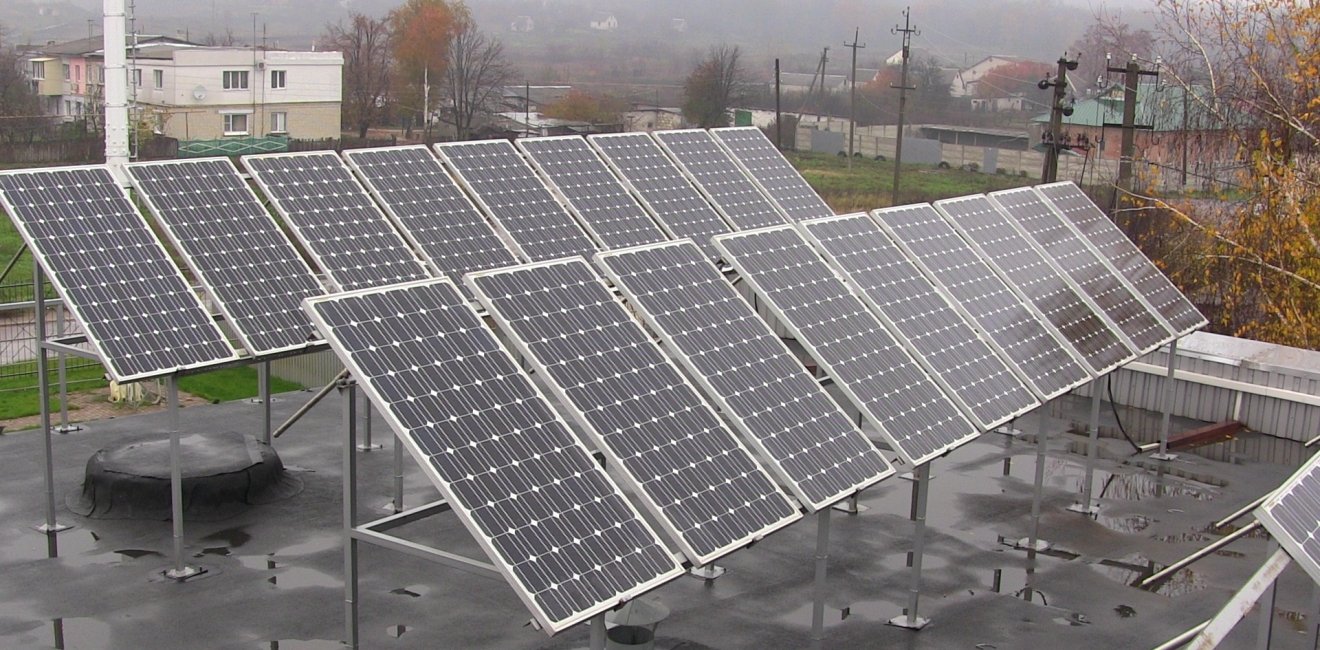
A blog of the Kennan Institute
Before the Soviet Union collapsed, the Ukrainian energy system was among the most modern in Europe. But since independence, economic conditions have not favored new investments in energy, with the result that Ukraine now significantly lags Europe in the energy domain on such dimensions as amount of pollution produced (though that has fallen significantly) and age of the infrastructure. The technology to produce and transport energy and electricity is obsolete, with a high level of asset depreciation. Though the energy system is still very reliable, it is in dire need of modernization.
The need to catch up in the energy sphere gives Ukraine the opportunity to shift to renewable energy sources rather than simply upgrade older technology. This turn to renewables is taking place within the context of an increasing worldwide focus on reducing greenhouse gases and slowing global warming.
A specific prompt for Ukraine to develop renewable sources came in late 2010, when the country joined the European Energy Community and committed itself to a number of obligations, including the goal of deriving 11 percent of its energy from renewable sources by 2020. But for some years after signing the agreement, Ukraine saw little progress toward its many energy goals. A tangle of legal, economic, and political barriers stood in the way of realizing the transition to greener energy sources.
A case in point is the obstructive role played by Ukraine’s energy tariffs. In 2008, feed-in tariffs to support renewable energy were introduced in Ukraine. The feed-in tariff for solar electricity generation was among the highest in Europe and provided a good business for oligarchs at the expense of the state’s coffers and of the consumers who were paying for the electricity. The oligarchs also wanted to avoid competition, so later legislation prevented new players from entering the market. During that period the solar power station Perovo, built in Crimea, was among the most powerful in the world. It belonged to the oligarch Serhiy Klyuyev, a former MP and financial backer of Viktor Yanukovych, who later fled the country. His departure opened the door for the election of new political elites concerned to make the system more investor-friendly and to roll back the feed-in tariff charged to big solar power stations.
These goals were achieved after the Revolution of Dignity in the winter of 2013–2014, when the newly elected parliament amended the legislation: existing barriers to entering the field were abolished, and the exorbitantly high feed-in tariff for solar energy (so-called Klyuyev’s tariff) was reduced. It is still among the highest in Europe, reflecting both the cost to the state of supporting the development and production of energy from renewable sources and the decision of many other European states to replace feed-in tariffs with different systems of renewables support. So the tariff is, in part, good from the point of view of helping the state meet its renewables obligations. But price matters.
Since 2014 Ukraine has boosted its renewable energy production, but it is still far from meeting the country’s international obligations. In 2017, for example, renewable sources (excluding big hydro) were responsible for less than 1.5 percent of electricity generated in Ukraine—a far cry from the 9.7 percent required according to the agreement with the European Energy Community.
Just a few numbers will suffice to show the price of turning Ukrainian energy green under current conditions. In 2017 solar energy was responsible for only 0.5 percent of electricity generated in the country, but it accounted for 4.05 percent of the total cost of electricity in Ukraine. Big hydro (not supported by feed-in tariffs) generated almost seven times more electricity while receiving almost the same money as solar energy did. Nuclear energy generated 56.46 percent of all electricity but its share in the total energy cost was only 27.85 percent. The 9.7 percent share of renewables-generated electricity expected in 2017 under Ukraine’s agreement with the European Energy Commission would carry a price tag more than 30 percent higher than it currently is. So it is difficult to imagine how renewables-sourced energy could be affordable for households. It is also difficult to predict the impact of a greater commitment to renewables on the competitiveness of an energy-hungry economy that has seen staggering increases in energy prices over the last two years while also sustaining high energy losses as a result of an obsolete energy infrastructure.
So the question is, should the current system of supporting green energy stay the same or should it be amended by parliament? The Ukrainian parliament will shortly face decisions on the feed-in tariff’s future. Some MP’s call for leaving the system unchanged, while others consider amending some part of it.
It is true that Ukraine should continue to try to meet its international obligations on renewables. But energy saving and energy efficiency are tasks of top importance for Ukraine. It does not make a lot of sense to invest in producing green energy and then pay high costs for its consumption if a third to a half is lost later to inefficiency. Janez Kopacz, head of the Energy Community, has expressed his opinion that the current system of support for developing and producing green energy in Ukraine is not perfect for current conditions.
High tariffs do attract outside investments. But the costs must later be paid back by Ukrainian energy consumers. Much of the energy equipment is being imported, which places pressure on the country’s balance of payments and on the national currency exchange rate. In the case of foreign investments, that just increases the GDP of other countries at the expense of the Ukrainian economy. At a time when the costs of renewable energy technologies are falling, the current feed-in tariff risks acquiring the same taint as Klyuyev’s dealings.
Ukraine is currently developing dynamically as a country. Its energy needs must be met by rapidly changing technologies. It seems implausible that the renewables’ feed-in system could be frozen and not amended under such conditions. Many countries have replaced a feed-in tariff with other means of supporting renewable energy. It is unclear why Ukraine cannot follow suit. Right now the tariff system reminds observers forcefully of Lenin lying in his mausoleum, unchanging, a symbol of an earlier economic and political era. A note of caution is needed, however: the system supporting the development and production of energy from renewable sources should be economically sound. Otherwise it will generate extra profits for investors at the expense of Ukrainian consumers—citizens and businesses.
Author

Director, Energy Program, Ukrainian Institute for the Future

Kennan Institute
After more than 50 years as a vital part of the Wilson Center legacy, the Kennan Institute has become an independent think tank. You can find the current website for the Kennan Institute at kennaninstitute.org. Please look for future announcements about partnership activities between the Wilson Center and the Kennan Institute at Wilson Center Press Room. The Kennan Institute is the premier US center for advanced research on Eurasia and the oldest and largest regional program at the Woodrow Wilson International Center for Scholars. The Kennan Institute is committed to improving American understanding of Russia, Ukraine, Central Asia, the South Caucasus, and the surrounding region through research and exchange. Read more

Explore More in Focus Ukraine
Browse Focus Ukraine
Talking to the Dead to Heal the Living

Ukrainian Issue in Polish Elections


